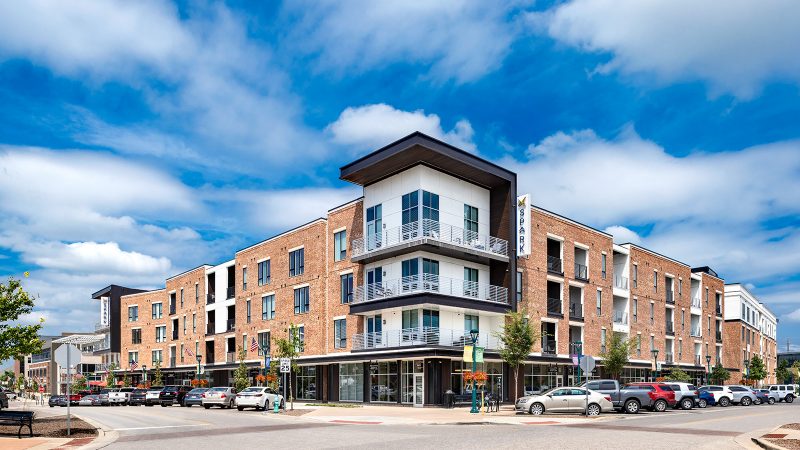July 1, 2016
Originally published in the Indy Star
By Kris Turner

Artists, tradespeople and the like soon will have a new home in Fishers. That home, however, isn’t just a place to live — it also doubles as a studio or gallery.
Although the concept isn’t new, it is relatively new to the Indianapolis area. Envoy Inc. and Hageman Group are pioneering the project, which will be located at the northwest corner of North Street and Lantern Road.
The idea is part of a $47 million redevelopment project that also includes a three-story office building and a 500-space parking garage. It is slated to break ground later this year.
Scott Baldwin, a principal at Envoy, said although the project is in its early stages — it was approved by the Fishers City Council on Monday — creating live/work spaces within the building will attract millennials, artists and other movers and shakers.
“We feel that there is a growing trend in both millennials and artists wanting to live in the exact space where they work,” he said. “Our spaces are going to have the potential to have a side-by-side studio or a studio below their unit.”
The building that will house the live/work spaces is slated to have 240 residential units and 5,000 square feet of commercial space. It will feature one- and two-bedroom apartments, and the live/work areas will be located on the first floor along Lantern Road.
The cost of those units has not been determined.
“It’s a space where you go downstairs and work on a canvas, work on clay pots or you have some kind of cooking business,” Baldwin said. “We think there’s enough of a demand that it speaks to the smart, vibrant entrepreneurial initiative that Fishers has been embracing.”
Fishers Mayor Scott Fadness echoed Baldwin’s comments, saying the building taps into the city’s vision for its future. It will attract creatives, who bring a flair and energy all their own.
“It’s more of a value system than a specific industry,” Fadness said. “We’re looking for innovators in the arts, design field, software development. We’re really agnostic to what the industry is — we’re looking to attract the next economy.”
Live/work spaces have worked in other cities and, if it goes well, Fishers can build more in the future, Fadness said. The area where the building is being constructed wouldn’t have been suitable for retail, he said.
“It’s a proven concept, so we’re interested to see how this first one goes, and we can always evaluate whether we can do more,” Fadness said. “With residential and retail, sometimes there’s just locations where retail doesn’t make a great deal of sense.”
Similar small projects have been developed in Indianapolis and Carmel. Those developments are geared toward more traditional businesses such as salons and specialty food stores.
Melodie Bahan, vice president of communications for Artspace, a nonprofit real estate developer based in Minnesota, said live/work spaces have been constructed across the country since the early 1990s and are a hit.
Artspace has developed about 40 live/work projects across the country in the past 26 years, she said.
“So many artists are living on the edge of poverty or in poverty, and so many artists have a difficult time affording studio space and a place to live,” Bahan said. “This way, artists can have a space to live and work in the same unit.”
The areas around the live/work spaces Artspace has constructed almost always become centers of urban renewal, Bahan said. Many of Artspace’s developments are income-adjusted so artists aren’t priced out of the neighborhoods they help create.
“One of the reasons that Artspace stated developing and owning real estate was because of gentrification displacement,” she said. “Artists will move into a neighborhood in buildings that are sketchy, dangerous and not well-kept, and people eventually flock to the neighborhood because artists make it cool.
“They’re followed by businesses and other people who want to live near them. Then the neighborhood becomes more and more expensive, and artists get priced out. With our model, it’s a way of keeping artists in the neighborhood.”
Bahan said live/work spaces foster creativity among the artists, writers and other creatives who reside in them. The community that artists create is a benefit that can’t be quantified, she said.
“Across the board, one of the biggest things we hear from artists is that it’s a community within the building. When you have a group anywhere from 30 to 80 artists living together in one building, the opportunity for collaboration, communication and support is phenomenal,” Bahan said.